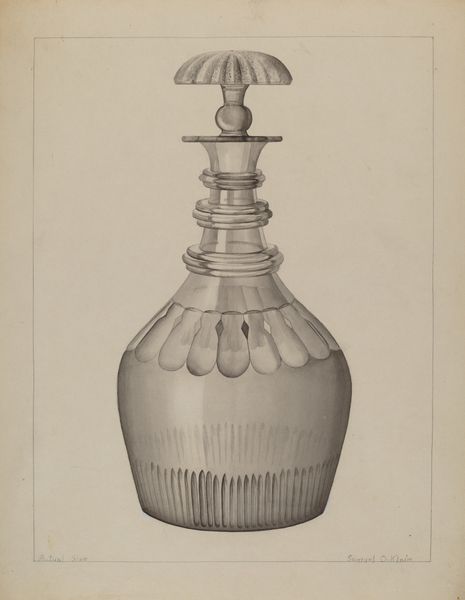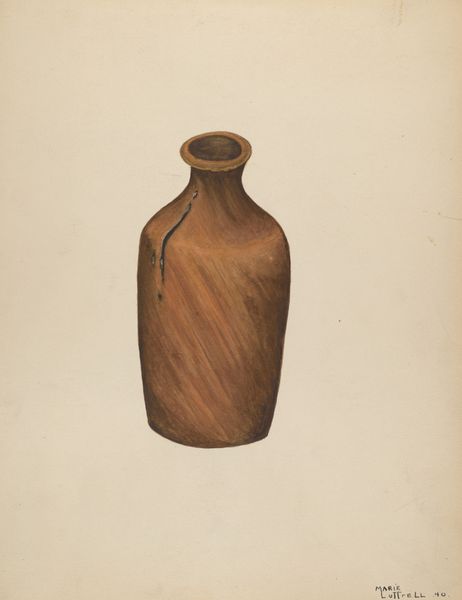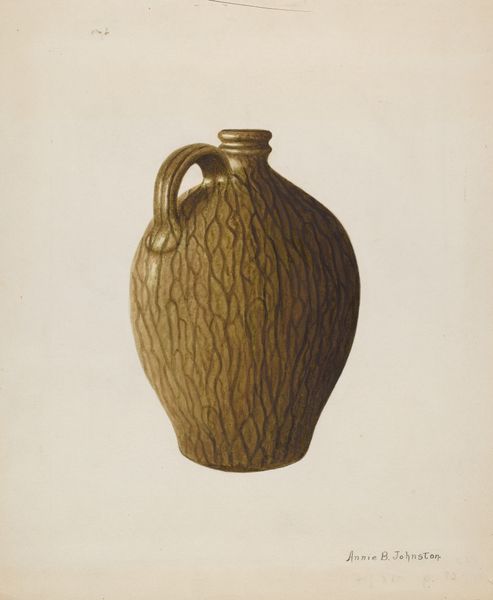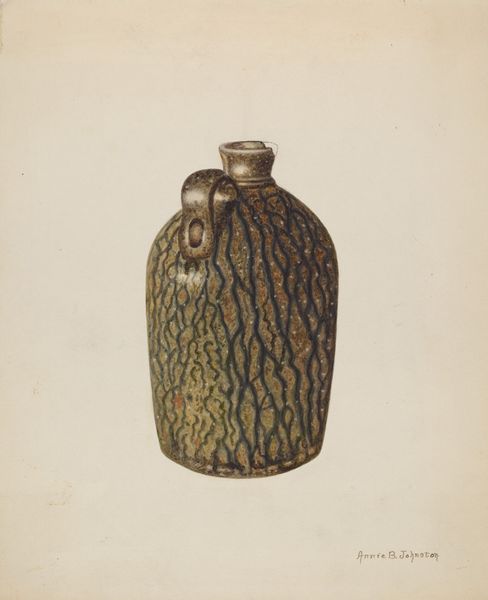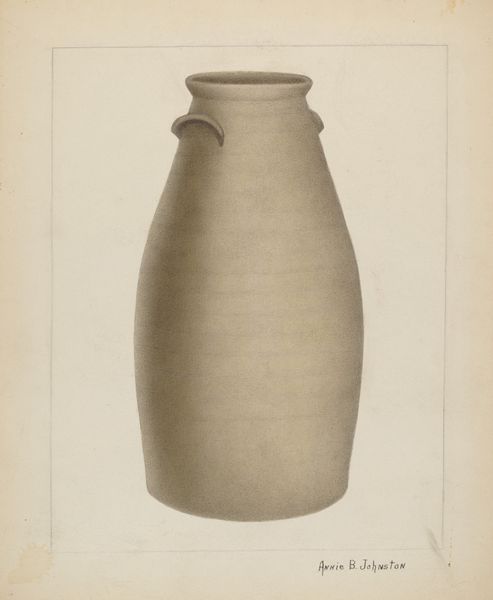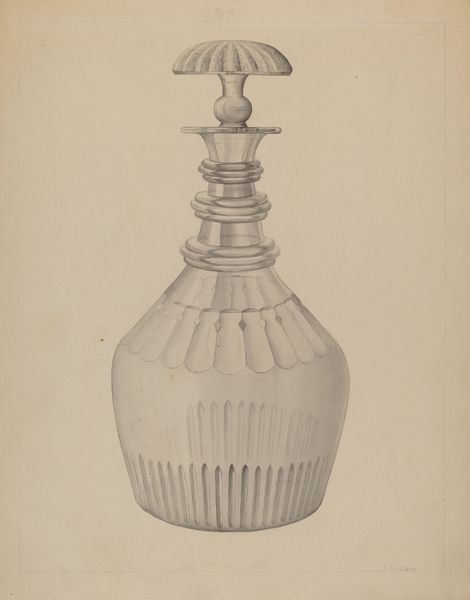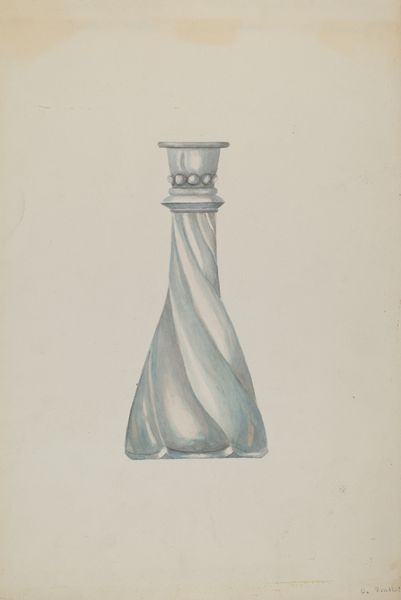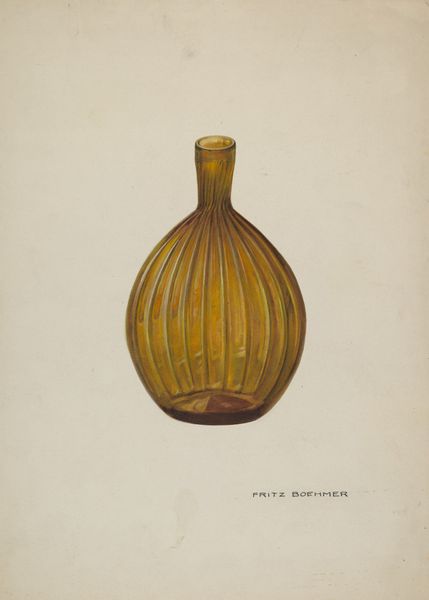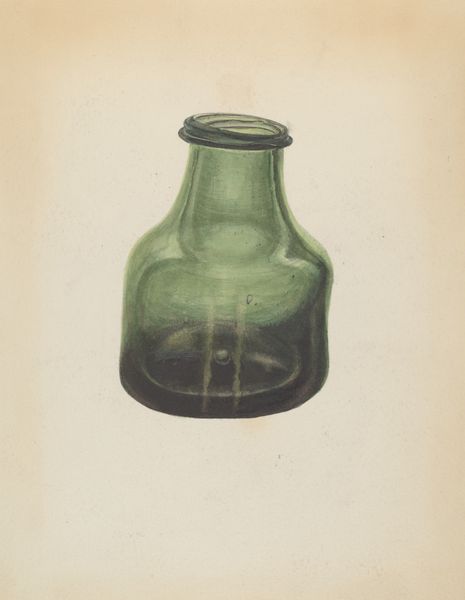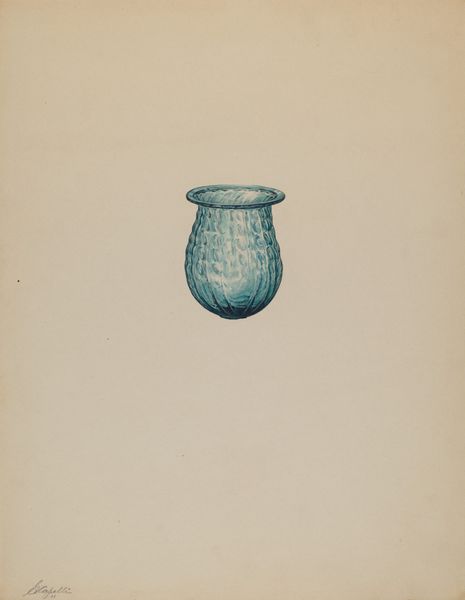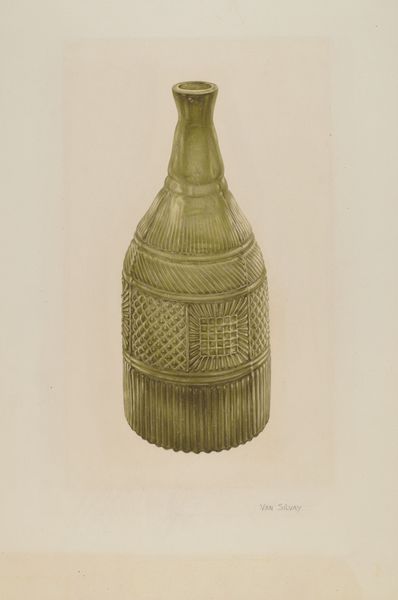
drawing, pencil, graphite
#
drawing
#
charcoal drawing
#
pencil drawing
#
pencil
#
graphite
#
watercolor
#
realism
Dimensions: overall: 29.1 x 22.6 cm (11 7/16 x 8 7/8 in.)
Copyright: National Gallery of Art: CC0 1.0
Curator: This graphite drawing presents us with a salt shaker from around 1939 by Palmyra Pimentel. Editor: Simple yet evocative, isn't it? It feels… restrained. The tonal range, so narrow, seems to mute the object, as if draining it of a more vibrant existence. Curator: Precisely. Consider the era: the late Depression era. This seemingly mundane object, a household staple, becomes a subject of artistic inquiry. Is it not an examination of everyday labor, of making art from available, accessible materials? Editor: But think about salt itself. Historically, it's been a preservative, a flavoring, even a form of currency. To depict a salt shaker isn't just to show a utilitarian object, but to summon those connotations. Scarcity, value, necessity—all distilled in this small container. Curator: And consider the craft! Pimentel has meticulously rendered the textures, from the smooth glass to the perforated metal lid. There's a deliberate focus on the means of production, how materials shape our lives, literally flavoring it. Editor: Yet that lid, riddled with holes, evokes so much more. It can be interpreted as a representation of shared sustenance, the potential for things to come out or flow freely from. Curator: Indeed. But let’s not overlook the technical skill displayed. Notice the subtle variations in the pencil strokes, creating the illusion of light reflecting off the glass. A skilled artist makes this everyday task worthy of study and a document of its time. Editor: Which brings me back to my initial impression of restraint. The choice of subject, the muted palette—it all whispers of economic austerity and resilience and, potentially, community. Even something as simple as a salt shaker could signify shared scarcity, especially at a meal table. Curator: An astute observation. It showcases how economic factors directly impacted artistic practice, pushing artists to find beauty and meaning in their immediate surroundings. It reminds us that great art need not always be grandiose or exotic. Editor: This exercise just goes to prove that looking closely at commonplace images can be revealing for both an object’s symbolic meaning and its material presence. Curator: Quite so. It's a delicate balance between material conditions and emotional impact, isn't it? A compelling reminder of the multifaceted ways we imbue our world with meaning.
Comments
No comments
Be the first to comment and join the conversation on the ultimate creative platform.


